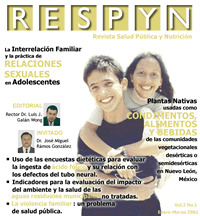INDICADORES PARA LA EVALUACIÓN DEL IMPACTO AL AMBIENTE Y LA SALUD DE LAS AGUAS RESIDUALES MUNICIPALES NO TRATADAS
Abstract
En la Reunión Cumbre de la Tierra, celebrada enRío de Janeiro en 1992, se estableció a través de
laAgenda 21, en su capítulo sobre la protección
de la calidad y el suministro de los recursos de
agua fresca, que "los recursos de agua dulce son
un componente esencial de la hidrósfera de la
Tierra y parte indispensable de todos los
ecosistemas terrestres" (1).También se
reconoció la necesidad de de hacer uso de las
aguas residuales colectadas por los sistemas de
drenaje y alcantarillado, ciñéndose a ciertos
criterios de seguridad.
Los volúmenes existentes
Downloads
References
Naciones Unidas.1992. Informe sobre la Conferencia de las Naciones Unidas sobre el
Medio Ambiente y el Desarrollo, Río de Janeiro, A/CONF.151/26, vol. I-IV.
PAHO/WHO. 1994. Health Conditions in the Americas, vols. I y II., Washington D.C.,
Pan American Health Organization/ World Health Organization.
Naciones Unidas, Op.Cit.
PNUMA 1988. Evaluación del impacto ambiental: procedimientos básicos para países
en desarrollo, Perú, CEPIS, OPS/OMS.
World Bank. 1991. Environmental Assessment Sourcebook, vol. I-III, Washington
D.C., World Bank.
NOM-002-ECOL-96. 1997. Norma Oficial Mexicana, Límites máximos permisibles de
contaminantes en las descargas de aguas residuales a los sistemas de alcantarillado o
drenaje municipal.
Hederra R. 1996. Manual de vigilancia sanitaria, Washington D.C., Organización Panamericana de la Salud.
World Bank, Op.Cit.
Gemmell A 1985. Assessment of Liquid/Solid Waste Disposal, UK, University of
Aberdeen.
CEPIS REPINDEX. 1994. Evaluación del impacto ambiental, Perú, CEPIS, OPS/OMS.
Garza Almanza, V. 1999. "Riesgos a la salud en el Valle de Juárez asociados al
reuso agrícola de las aguas residuales de Ciudad Juárez, Chihuahua", Tesis de
Doctorado) Facultad de Ciencias Biológicas, Universidad Autónoma de Nuevo León
(México).
Dias Moreira. 1996. "Origen y síntesis de los principales métodos de evaluación de
impacto ambiental (EvIA)" en Manual de Evaluación de Impacto Ambiental de la
República Federal del Brasil, Paraguay, ENAPRENA.
Downloads
Published
How to Cite
Issue
Section
License
The rights of the work belong to the author or authors, however, by sending it for publication in the Public Health and Nutrition Magazine of the Faculty of Public Health and Nutrition of the Autonomous University of Nuevo León, they grant the right for its first publication in between electronic, and possibly, in print to the Public Health and Nutrition Magazine. The license used is the Creative Commons attribution, which allows third parties to use what is published whenever the authorship of the work is mentioned and the first publication that is in the Public Health and Nutrition Magazine. Likewise, the author or authors will take into account that it will not be allowed to send the publication to any other journal, regardless of the format. The authors will be able to make other independent and additional contractual agreements for the non-exclusive distribution of the version of the article published in the Public Health and Nutrition Magazine (e.g., institutional repository or publication in a book) provided they clearly state that The work was published for the first time in the Public Health Magazine, Magazine of the Faculty of Public Health and Nutrition of the Autonomous University of Nuevo León.










